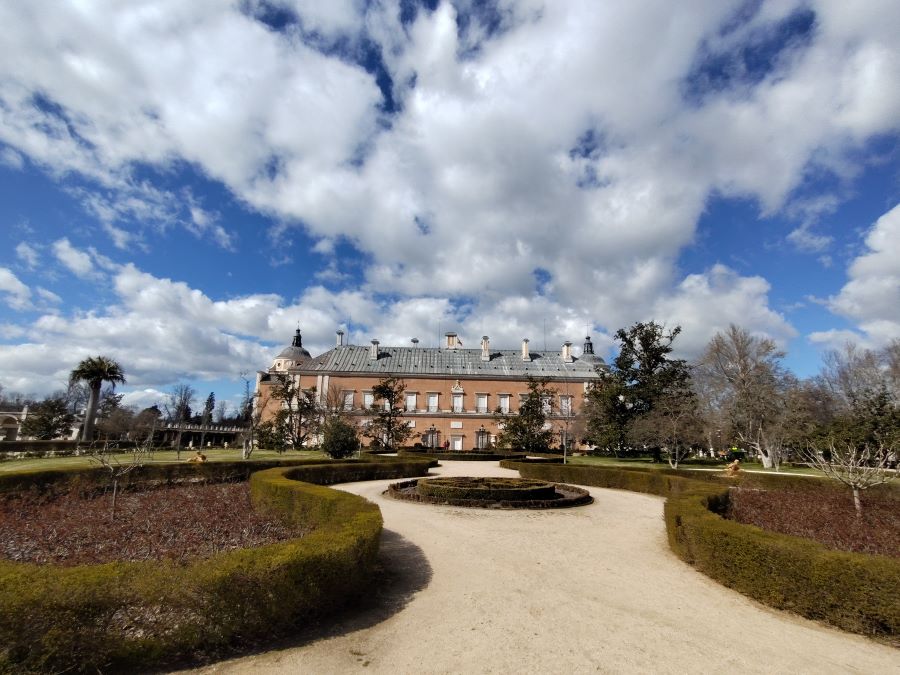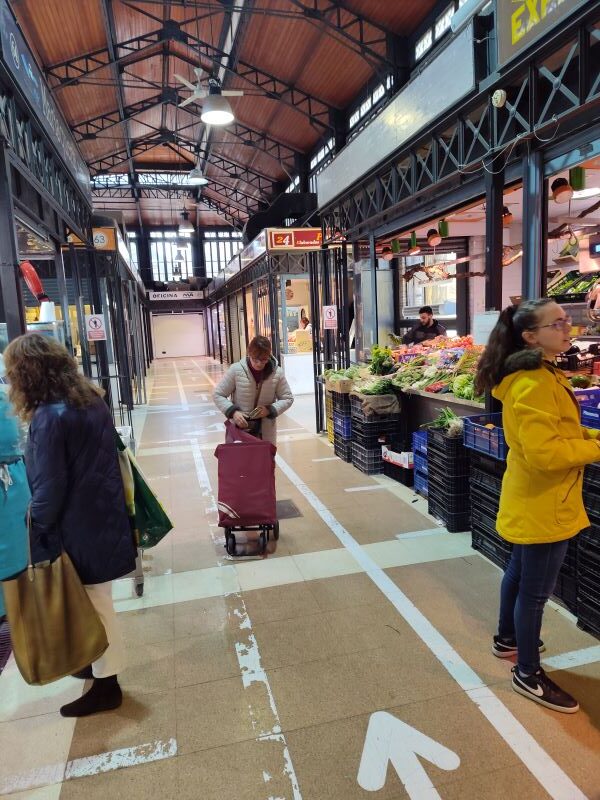Visit Aranjuez Palace Spain – the grand Spanish alternative to Versailles
I’ve often heard that Aranjuez, Spain was compared to the Spanish version of Versailles, so when I was visiting Madrid, I had to make a day trip to visiting the royal palace at Aranjuez and see it in person. Not quite on the scale of Versailles, it was still grand in a more understated and elegant way. Even the gardens, plazas and the town was a lot of fun to explore on this day trip.
I took an easy local commuter train from Madrid to Aranjuez – an easy and short 40 minute commute to get to the train station. The palace, only an easy walk under tree-lined streets before you start seeing cobble streets and stately trees that eventually open up to slight views of the palace and royal French Iron-wrought gates and fencing.
There’s also local public transportation or taxis available to take you directly to the palace, since it was still early, I decided to take the nice and easy walk from the station to the palace grounds which was less than a 15-minute walk.
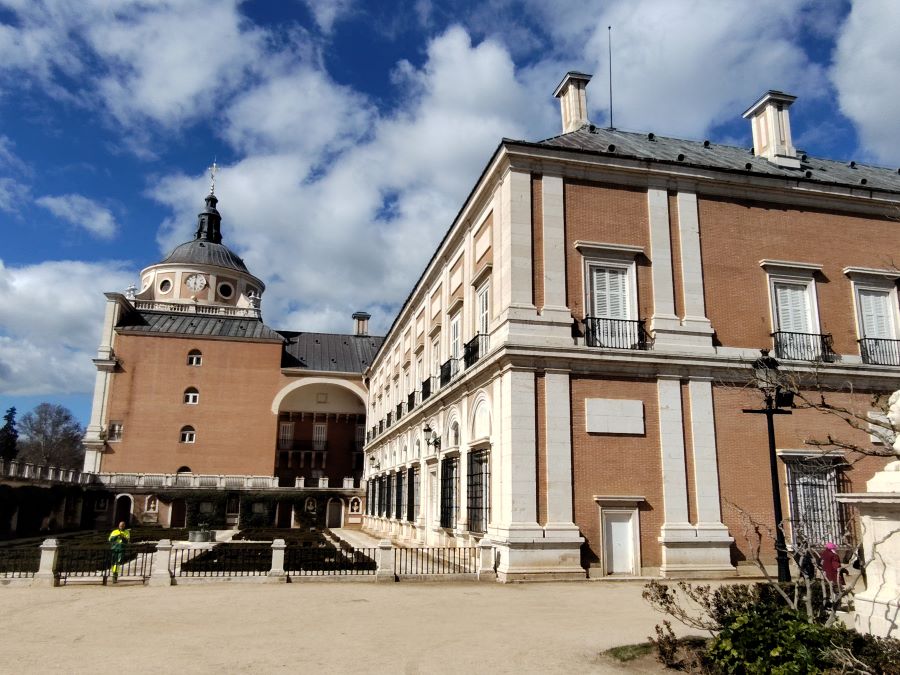
History background to Aranjuez Palace
The palace of the Aranjuez was started during the Middle Ages. At the end of the 15th century at Aranjuez, royal families came to the palace for hunting and relaxation.
In 1561, Felipe II followed through Emperor Charles to expand the original hunting lodge into a fashionable Royal Palace of Aranjuez. The king ordered the build the current palace gardens and the ornate chapel from architect Juan Bautista de Toledo.
Plans were restarted in 1715 to restart and continue the work on the palace and create a distinctive feature of white and red facade details, the parade grounds
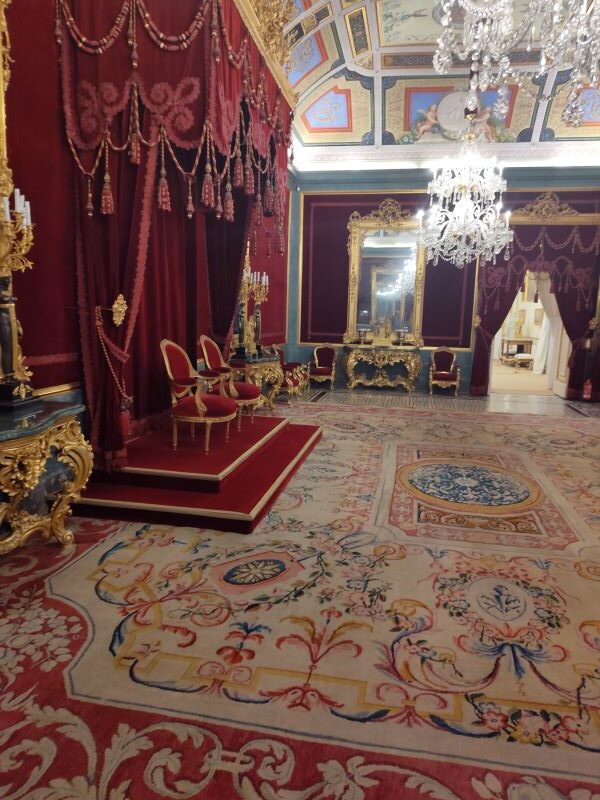
Exploring the interiors of Aranjuez Palace
The tour of the palace is done with an audio tour that you can start and stop on your own and spend time seeing the beautiful details. While touring no photos are allowed inside but you can photograph the main stairs and entry, views of the exterior and courtyard areas and the front entrance of the palace. Inside you are allowed to tour over 25 rooms from public rooms like the throne room, dining room and even a hall of mirrors to the more private chambers of the Spanish royalty visiting for that season.
Check out these palace guided tours below:

Entering the cobbled streets and ornate iron gates to Aranjuez Palace
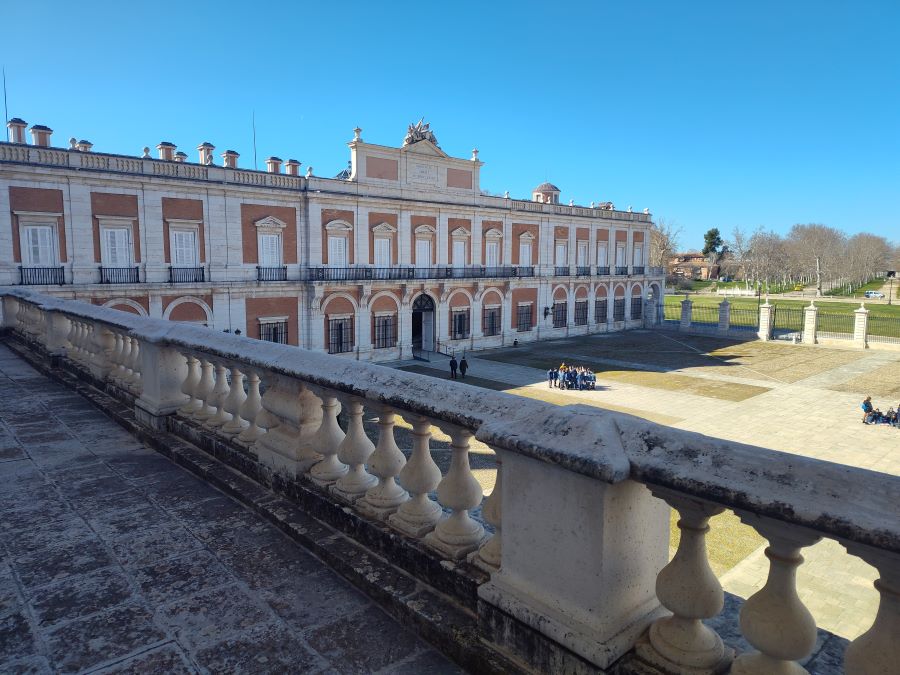
Courtyard views from the balcony of Aranjuez Palace
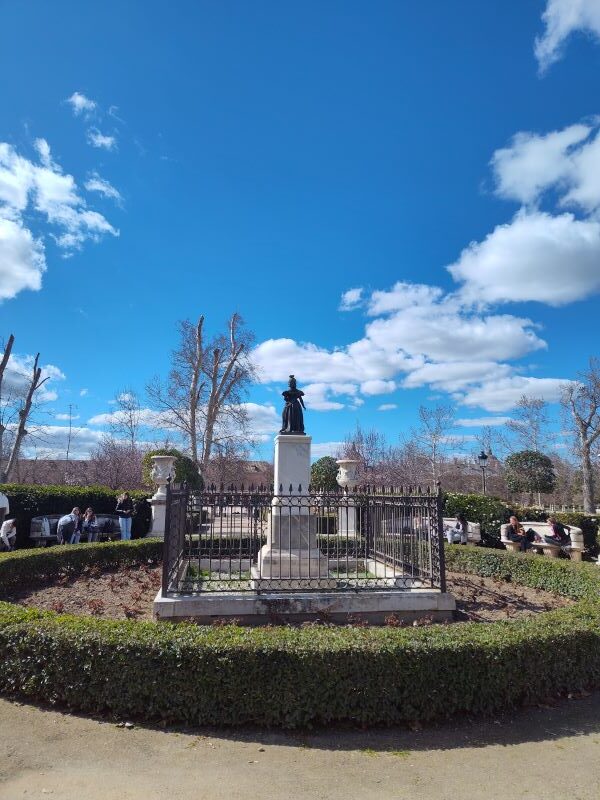
The Gardens of Aranjuez
The gardens were built around the fertile valley and Tajo and Jarama River basins. The palace gardens were planted with a variety of important and cultivated trees.
You’ll find wonderful fountains, waterfalls, mythological sculptures and a beautiful orchard for Spanish Royalty. The parterre garden is formal with marble vases, annual flowers along with formal hedges done in French Baroque style and then more distinctive gardens including the informal English garden with large natural areas for hunting and event areas.
Springtime was when the Spanish royalty stayed at Aranjuez and the gardens where at their prime to enjoy the beautiful gardens in their prime and now you can visit and also enjoy them any time of the year but more so when the gardens are in full bloom in the spring to summer season.
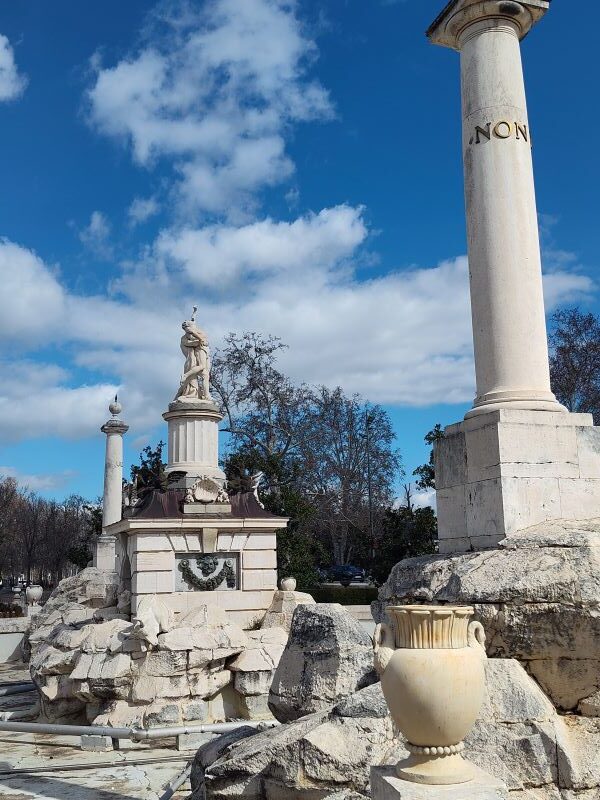
Jardin de la Isla
This beautiful and fantastical garden was planned with tunnels, formal gardens and fountain squares, wooden pergolas and lush plantings with mature mulberry trees and elegant formal hedges.
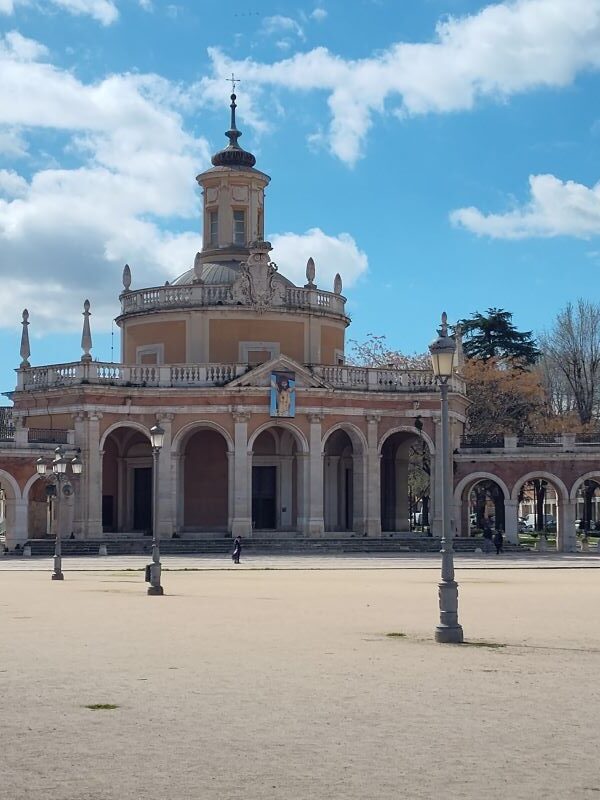
A beautiful little royal chapel
Next to a beautiful fountain that frames the front of the palaces sits a little chapel that was developed by architects isidro Gonzalez Velazquez and Santiago Bonavia in the 18th century. The entire placement of the chapel, fountains and formal layout, makes this a wonderful place to enjoy and photograph for your visit and enjoyment.
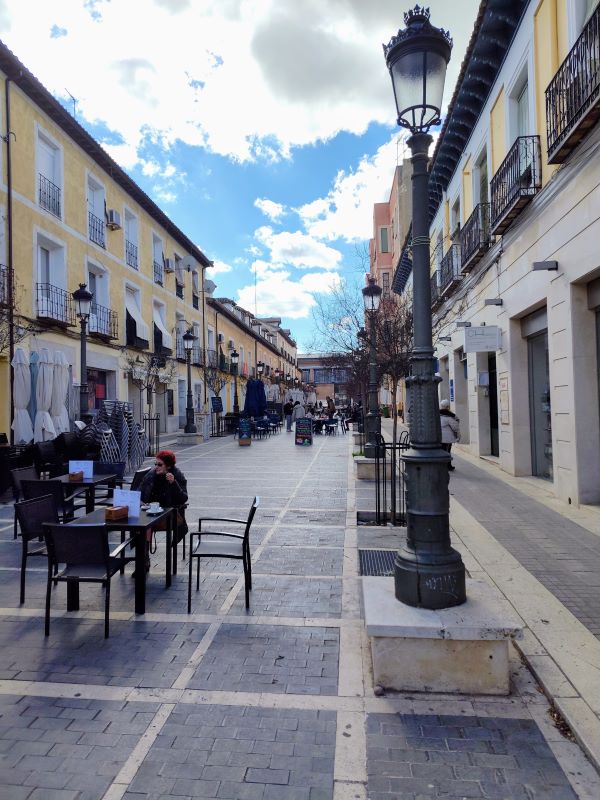
Development of Aranjuez town center
To show appreciation to the local citizens for supporting the War of Succession, Philip V turned the town into a royal center with gorgeous buildings, parks, gardens, public landmarks and monuments along with ornate churches. The town reached its peak as a center for the court lifestyle during the rein of Charles III and Charles IV when the public gardens and palace was enlarged.
Plaza de San Antonio
A lively square with elegant 18th-century architecture, including the San Antonio de Padua Church. It’s a great spot to relax and people-watch.
Market and Local Streets
Wander through Calle de la Reina and nearby streets to find local shops, traditional taverns, and a taste of daily life in Aranjuez.
Casa del Labrador
A smaller palace located inside the Jardín del Príncipe, known for its beautifully decorated rooms and fine art collections.
Royal Barge Museum (Museo de Falúas Reales)
A fascinating museum showcasing the elegant boats used by Spanish royalty on the Tagus River. It’s located inside the Jardín del Príncipe.
Tagus River Walk
Take a stroll along the Tagus River, where you’ll find scenic views, old bridges, and boat rides available in good weather.
Bullring of Aranjuez
One of Spain’s oldest bullrings, dating back to 1797. If you’re interested in history, guided tours are available.
Teatro Real Carlos III
An elegant 18th-century theater that still hosts performances today. If you enjoy culture, check the schedule for concerts or plays.
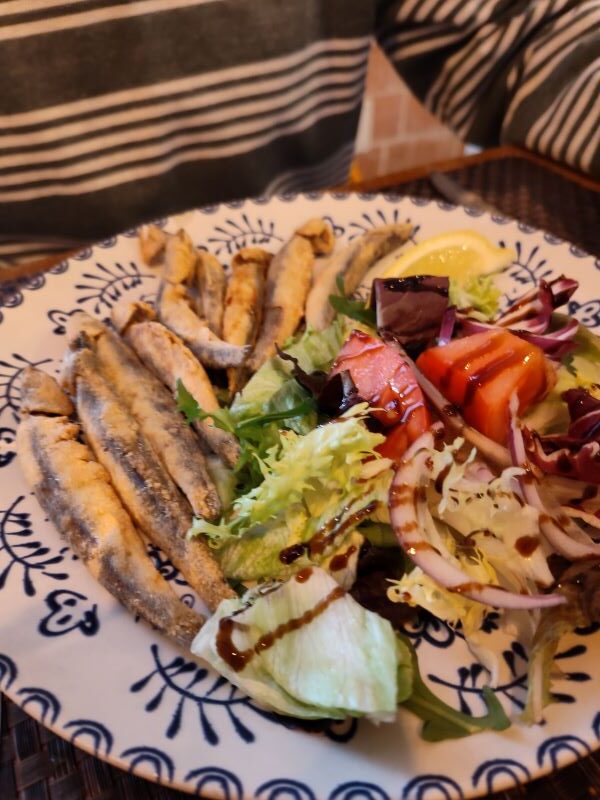
What to eat in Aranjuez
Aranjuez has a strong culinary tradition influenced by its royal history and fertile surroundings. The region is particularly famous for its fresh produce, hearty Castilian dishes, and traditional sweets. Here’s what you should try when visiting:
1. Strawberries and Asparagus
Aranjuez is widely known for its strawberries (fresas de Aranjuez), which are incredibly sweet and often served with fresh cream or in desserts. You’ll also find delicious wild asparagus (espárragos de Aranjuez), which is typically grilled, served in salads, or paired with eggs and ham.
2. Cocido Madrileño
A classic Castilian stew made with chickpeas, meats (chorizo, morcilla, beef, and pork), potatoes, and vegetables. It’s a comforting dish, especially popular in colder months.
3. Carillas de Aranjuez
A local variety of black-eyed peas (carillas) often cooked in a stew with chorizo, vegetables, and spices, giving it a rich and hearty flavor.
4. Trout from the Tagus River (Trucha a la Aranjuez)
Historically, the nearby Tagus River provided fresh trout, which was often prepared with local ingredients like asparagus and saffron.
5. Perdiz Estofada (Stewed Partridge)
A traditional dish in the region, this game bird is slow-cooked in a flavorful broth of wine, garlic, and aromatic herbs, making it tender and rich in flavor.
6. Huevos Estrellados
A simple but delicious dish of fried eggs over crispy potatoes, sometimes topped with Ibérico ham or chorizo.
7. Local Cheeses and Meats
Try Manchego cheese, which comes from the nearby La Mancha region, and jamón ibérico, both of which pair perfectly with local wines.
8. Royal Sweets (Dulces Reales)
For dessert, don’t miss fardelejos, a delicate almond pastry similar to a puff pastry filled with marzipan. Other popular treats include buñuelos (fried dough balls with sugar) and rosquillas (anise-flavored donuts).
9. Wines from the Madrid Region
While not as famous as Rioja or Ribera del Duero, the wines from the Vinos de Madrid DO (Denomination of Origin) are worth trying, especially the reds and whites from the nearby Arganda and Navalcarnero areas.
Where to Try These Dishes?
You’ll find many of these specialties in traditional asadores (grill restaurants) and taverns around the Plaza de San Antonio and along Calle de la Reina. For a unique experience, some places even offer strawberry and asparagus tastings when they are in season.
Would you like recommendations for specific restaurants?
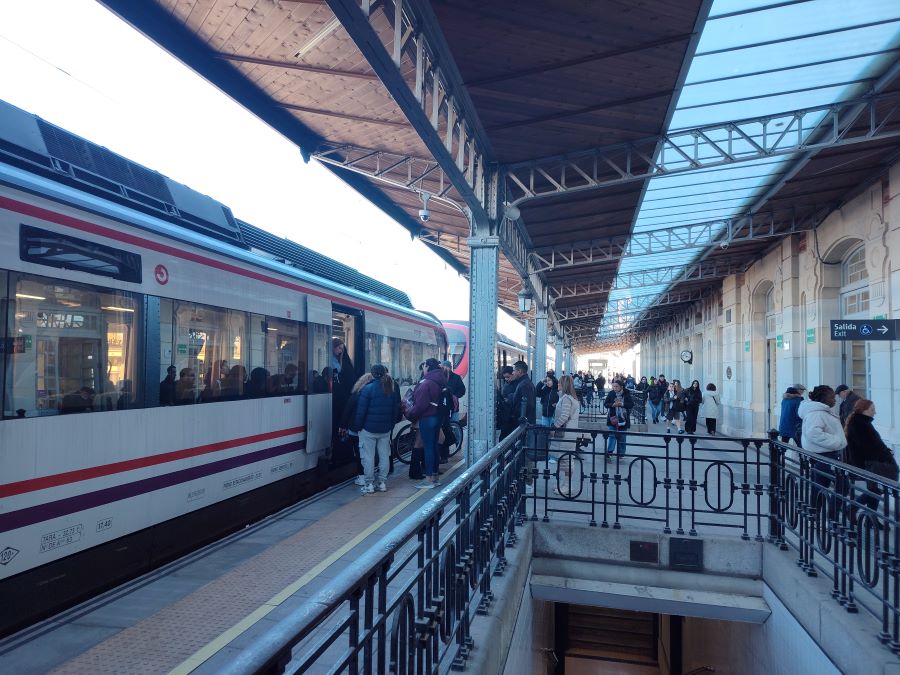
How to Get to Aranjuez from Madrid
Getting to Aranjuez from Madrid is easy, and you have several transportation options depending on your budget and time preference:
I book train or bus reservations on the Omio website here to save time, effort and waiting in line so you can go direction to the station and board with your booking online ticket.
By Train (Cercanías) – Fast and Convenient
The most common and efficient way to get to Aranjuez is by taking the Cercanías C3 line from Madrid.
- Departure Station: Atocha Cercanías
- Journey Time: Around 45 minutes
- Frequency: Trains run every 15–30 minutes
- Cost: Around 4–5€ one way
By Bus – Budget-Friendly Option
You can also take a bus from Madrid to Aranjuez.
- Bus Line: Intercity bus 423
- Departure Point: Madrid’s Estación Sur (Méndez Álvaro)
- Journey Time: Around 50 minutes to 1 hour (depending on traffic)
- Frequency: Buses run frequently throughout the day
- Cost: Around 4–6€ one way
By Car – Flexible and Scenic
If you prefer driving, you can reach Aranjuez by car.
- Route: Take the A-4 motorway south from Madrid
- Distance: About 50 km (31 miles)
- Driving Time: Around 35–45 minutes, depending on traffic
- Parking: There are several free and paid parking areas in Aranjuez, especially near the Royal Palace
By Tour – Hassle-Free Day Trip
If you prefer a guided experience, many tour operators offer day trips to Aranjuez, often combined with a visit to the Royal Palace of Aranjuez and gardens. We share some guided tours from Madrid to Aranjuez below. Check out the tours that we share on the post of guided tours to the palace, gardens and the town.
Best Option?
- If you want the quickest and most convenient way, take the train.
- If you’re on a budget and don’t mind a slightly longer trip, the bus is a good alternative.
- If you prefer flexibility and plan to explore nearby areas, driving is a great option.
When to Visit
The palace, grounds and town is a year-round destination and you can visit anytime according to your schedule.
If you want to really enjoy the beautiful surroundings around the palace and gardens, spring to summer is ideal with the seasonal colors and planting in place with fresh flowers and even autumn with the change of season creating colorful visuals in the gardens and town.
Monuments are open from 10 a.m. to 6 p.m. (October to March), and 10 a.m. to 8 p.m. (April to September). Monuments are closed on Mondays.
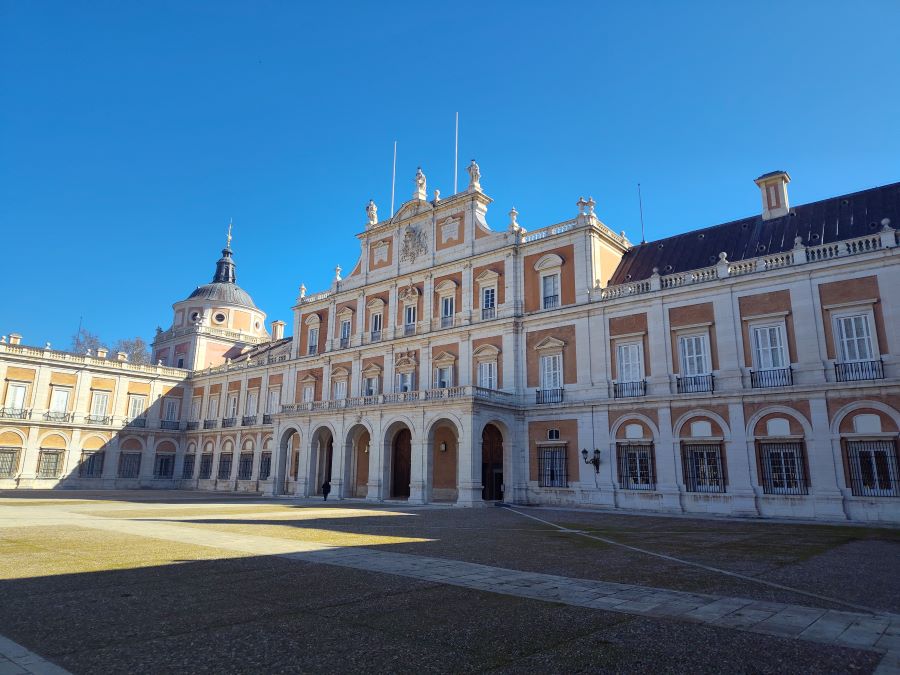
How to Visit
You can definitely do this as a day trip but to really enjoy the beautiful spaces outdoors in the gardens and around the town an overnight visit or weekend excursion would be idea.
You can enjoy the Royal palace and gardens one day and then the city center and the historic groves and orchards along the Tagus River for a more relaxed visit.
You can get tickets in advanced or visit the palace early for entrance. I would definitely book a reservation in advance to make sure you can get a timeslot that works. Check out the main Aranjuez Palace website here for more details.
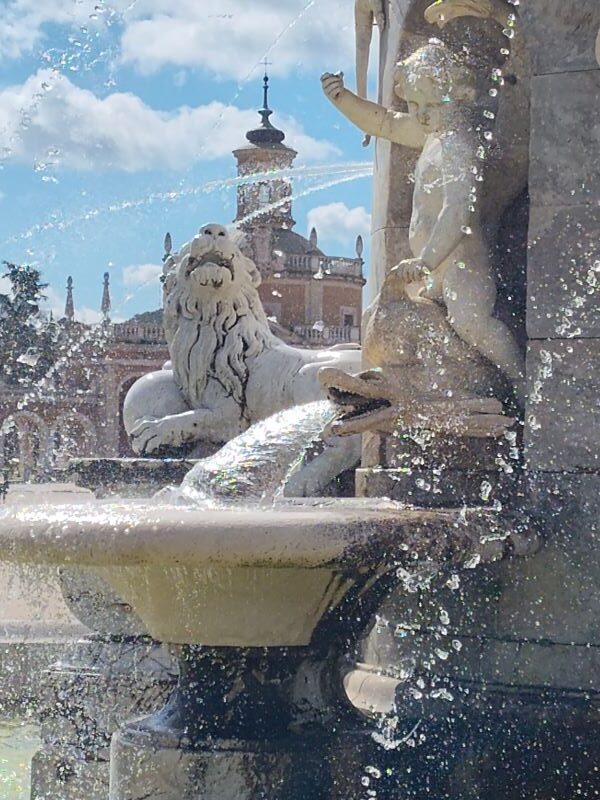
Guided Tours
A guided tour is always an easy option if you want to leave the details, logistics and expert guides to share information about the key places, historic and fun tidbits about the palace and area. Here are some options below.
From Madrid: Guided Day Trip to Chinchon, Aranjuez & Toledo
From Madrid: Aranjuez, Winery Tour & Tapas Lunch
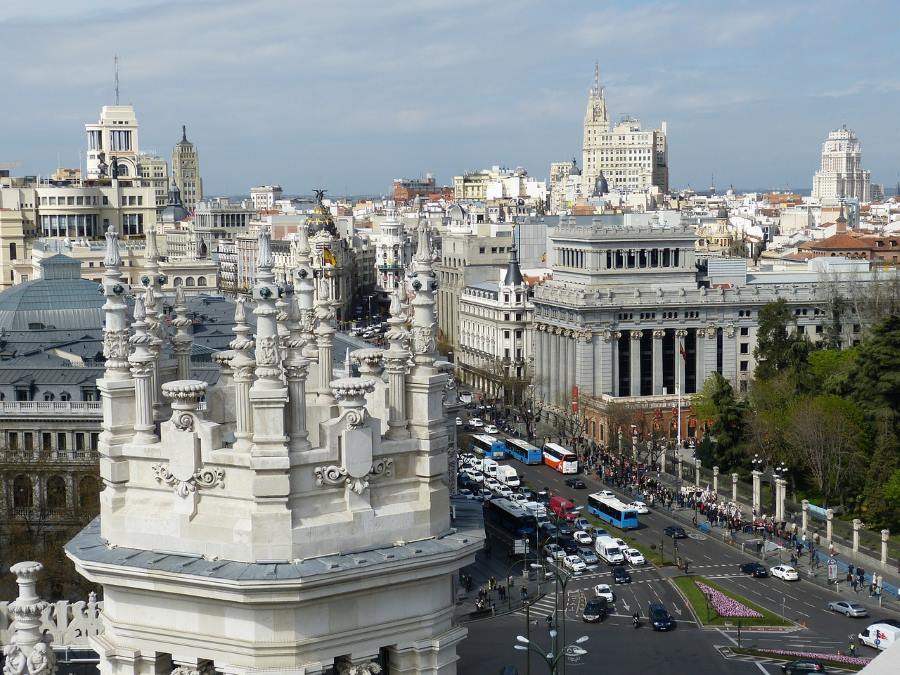
Check out these other places to explore in and around Madrid
Free things to do in Madrid, Spain

Conclusion on visiting Aranjuez Palace, Spain
Thanks for checking out this post on Aranjuez Palace Spain and Visiting Spain and Mediterranean.com, hope that this was helpful for planning a visit with things to do, attractions and other fun places to explore. Please come back again for more adventures in Spain and the Mediterranean coast.
Disclosure – some of the links above to various tours, transportation and hotels are affiliate links that benefits our site if you book here and we appreciate your support. The links are competitive, and you are not paying above what other affiliates provide.

